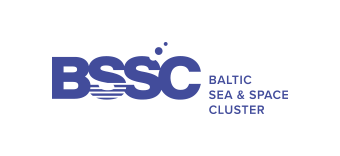Bottom under control. Kongsberg will detect an obstacle in the ocean in difficult conditions
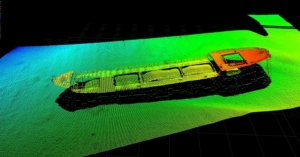
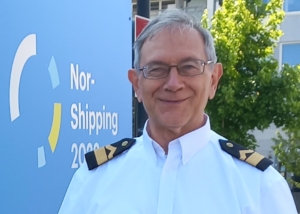 By Marek Grzybowski
By Marek Grzybowski
A new device for examining the bottom has appeared on the market. The echo sounder was introduced to the market by Kongsberg Discovery. The Norwegian company specializes in the development of underwater robotics and sensor technology. The lighter EM 2042 MBES device received a very positive response from hydrographers at the FEMME conference in Edinburgh.
During conferences related to the installation of offshore wind farms, the need to obtain accurate data about the seabed where the foundations of these large structures will be installed is repeatedly emphasized. During the inaugural conference of MUNIMAP at the Institute of Oceanology of the Polish Academy of Sciences, attention was also drawn to the need to precisely determine the location of the discharge of chemical warfare agents and the location of lost ammunition and shipwrecks with ammunition on board.
The construction of ports, breakwaters, quays, underwater pipelines, offshore wind farms, and cable connections requires careful examination and development of a seabed map. Thanks to its light, solid structure and easy installation, EM 2042 enables the collection of data about the seabed even in remote waters and in particularly demanding environments.
The device is designed so that it can be quickly adapted to operations when working conditions arise. Kongsberg emphasizes that “its unique flexibility expands operational capabilities across weather windows while providing high-quality data to customers seeking to understand, protect and explore the ocean floor.”
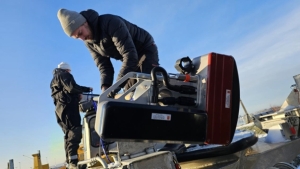
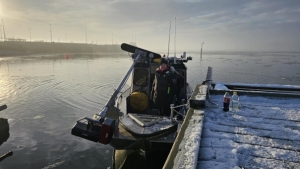
Echosounder for all hydrometeorological conditions
Kongsberg’s MBES, EM 2042 is designed to simplify the diverse challenges faced by customers. It is about the continuous expansion and modernization of infrastructure, including offshore wind farms and undersea cables.
Seabed mapping, especially in remote areas, often must be carried out in difficult weather conditions and with narrow operating windows. In these difficult conditions, it may be difficult to obtain undistorted and accurate data on the first attempt. There is also a constant risk of damage to expensive equipment.
– EM 2042 is 60% lighter than its predecessor EM 2040. It is designed to ensure easy configuration and launch on ships of various sizes, including unmanned surface vehicles (USV). It allows for easier operation in unfavorable conditions with less energy consumption. We are already receiving great feedback from customers, says Stene Førsund, vice president of Kongsberg Discovery.
The device can be easily mounted in the ship’s hull or on the side using a custom Kongsberg Discovery mount. Connectivity is provided using only one cable connecting the device to the computer. The system has been designed to reduce repair time and costs in the event of any damage during research operations.
– We have been using the EM 2042 sonar since January 2024. The size and weight of the overall system allows us to use the EM 2042 across our entire fleet, including small platforms such as workboats and USVs. The combination of one echosounder and positioning supplier allows us to take advantage of synergies, says Anders Wikmar, research and technical manager in Gothenburg, marine research expert at Clinton Marine.
The Clinton Marine Survey conducted, among others, geophysical surveys for an offshore wind farm project planned off the coast of Sweden commissioned by OX2. The ship “Northern Storm” was conducting research as part of the Galatea-Galene project, which is to be built in the Kattegat Strait, about 25 km from the coast. The farm will be located on reservoirs near the towns of Varberg and Falkenberg. The research covered an area of approximately 370 km2, including both the wind farm area and the planned cable corridors leading along the seabed to the shore.
Source of “clean” data
EM 2042 may be useful in works related to the construction of wind farms in the Polish economic zone. It stands out in the acquisition of “clean” data, high density and resolution thanks to a new level of beam control. Kongsberg emphasizes that “This is a key enabler of safer and smarter decision-making and a competitive advantage for demanding customers.”
The EM 2042 also includes built-in, export-license-free Kongsberg Seapath™ motion sensor technology. This provides multi-frequency backscatter and true real-time stabilization of all axes.
“We really appreciate the simplicity of the complete setup, including the mini-MRU [motion reference unit] mounted and pre-aligned inside the sonar head, and the tight integration with Seapath,” emphasizes Wikmar, adding: “We really appreciate the close collaboration with Kongsberg Discovery on the next generation of echo sounders and We’re looking forward to a unique set of features like quad viewing and predictable tilt. This will allow us to push the boundaries of research, so the future is bright.”
Kongsberg Discovery recently began an extensive sea trial program with its new long-range autonomous underwater vehicle (AUV), HUGIN Endurance.
HUGIN Endurance was launched in 2021. It is the largest of the HUGIN AUV group. It is about 11 meters long, 1.2 meters in diameter and weighs about 8,000. kg. It can reach a rated depth of 6,000 m. meters. It is designed to enable independent, multi-role operations over a range of approximately 1,200 nautical miles.
